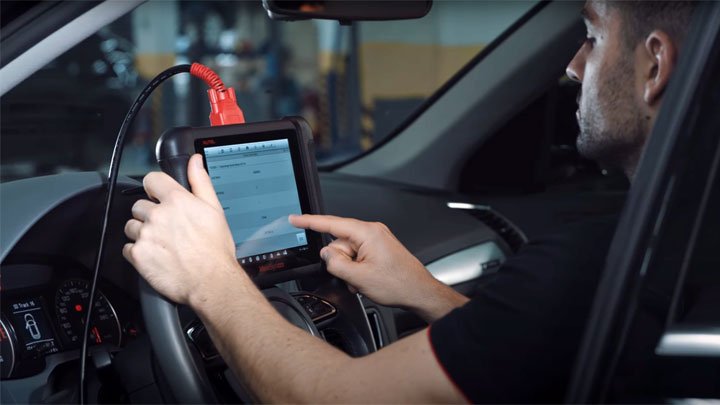20 Inspiring Quotes About Car Ignition Replacement
Car Ignition Replacement: A Comprehensive Guide
Car ignition systems play an essential function in the total functionality and reliability of automobiles. They are accountable for starting the combustion process in the engine, guaranteeing the vehicle runs efficiently. However, like all mechanical parts, ignition systems can wear in time, causing efficiency concerns. This article will offer an in-depth look at car ignition replacement, consisting of indications of failure, replacement steps, and maintenance ideas to assist vehicle owners keep their ignition systems in optimum condition.
Comprehending the Ignition System
Before delving into the replacement procedure, it is important to comprehend the components of the ignition system. It primarily includes:
Component
Function
Ignition Coil
Converts battery voltage into high voltage to produce a trigger.
Spark Plug
Sparks the air-fuel mixture in the engine cylinder.
Ignition Switch
Triggers the ignition system and permits electrical current circulation.
Distributor
Disperses high voltage from the ignition coil to the proper stimulate plug.
Ignition Control Module (ICM)
Controls the timing and shooting of the stimulate plugs.
These parts collaborate to spark the fuel-air mix in the combustion chamber, allowing engine operation. Gradually, wear and car key replacement prices can lead to ignition system failure, triggering the need for replacement.
Signs of Ignition System Failure
Particular signs show that the ignition system may need repair or replacement. Vehicle owners must listen to the following indications:
Difficulty Starting the Engine: If the vehicle struggles to begin or takes multiple efforts, it might signify ignition problems.
Misfires: Engine misfiring, identified by a rough idle or sudden loss of power, can indicate faulty trigger plugs or ignition coils.
Electrical Issues: Flickering lights or irregular control panel evaluates may recommend ignition switch issues.
Stalling: Frequent stalling, especially at low speeds, could come from ignition control module failures.
Reduced Fuel Efficiency: Poor combustion due to ignition failure can lead to increased fuel intake.
If vehicle owners experience any of these concerns, it is suggested to have the ignition system inspected by a qualified mechanic.
Steps for Car Ignition Replacement
Changing the ignition system can be a complex procedure. The following actions describe how to carry out a normal ignition replacement. Note that car key locksmith cost might vary based on the vehicle make and design.
1. Gather Necessary Tools and Parts
Before beginning the replacement, make sure that you have the necessary tools and elements:
- Screwdrivers (flathead and Phillips)
- Wrenches and cogs
- New ignition parts (coil, trigger plugs, supplier, and so on)
- Pliers
- Safety safety glasses and gloves
2. Disconnect the Battery
Safety initially! Disconnect the negative terminal of the battery to avoid electrical shock during the replacement procedure.
3. Eliminate the Old Ignition Components
Thoroughly remove the elements of the ignition system:
- If replacing trigger plugs, use a trigger plug socket and cog for removal.
- For the ignition coil, detach any wires before unbolting it.
- If relevant, carefully eliminate the supplier and any associated elements.
4. Set Up New Components
Set up the brand-new parts in reverse order of removal:
- Begin by placing the new ignition coil in position, ensuring all connections are protected.
- Install new stimulate plugs, bewaring not to overtighten them.
- If relevant, install the new distributor, aligning it correctly as you reconnect the electrical wiring.
5. Reconnect the Battery
When all parts are changed, reconnect the battery. Make sure the connections are protected, and there are no loose wires.
6. Evaluate the Ignition System
After setup, start the vehicle to evaluate the brand-new ignition system. Listen for smooth operation and look for any caution lights on the dashboard. If concerns continue, re-evaluate your setup.
Upkeep Tips for the Ignition System
To extend the life of the ignition system and avoid future concerns, consider the following upkeep suggestions:
- Regular Inspections: Schedule regular assessments of the ignition system throughout car upkeep checks.
- Change Spark Plugs: Follow the manufacturer's guidelines for stimulate plug replacement periods.
- Examine Wiring: Inspect wiring for signs of deterioration, fraying, or disconnections.
- Keep the Engine Clean: Regularly cleaning the engine bay can prevent dust and debris from accumulating around ignition elements.
- Use Quality Parts: Always use high-quality ignition components from reputable producers to make sure reliability.
FAQs About Car Ignition Replacement
**Q1: How typically must I change my ignition system?A1: While there is no specific timeline, regular evaluations should be carried out every 30,000 miles or as suggested by the vehicle producer. Elements like stimulate plugs generally require replacement every 30,000 to 100,000 miles, depending on the type. Q2: Can I change ignition elements myself?A2: Yes, if you have standard
mechanical abilities. Nevertheless, for those unknown
with ignition systems, it's recommended to look for professional assistance to avoid possible errors. Q3: What are the costs associated with ignition replacement?A3: The cost can vary based upon the vehicle and elements required
. Parts may range from ₤ 20 to ₤ 300, while labor costs in a mechanic's shop can include another ₤ 100 to ₤ 200. Q4: How can I inform if the ignition coil is faulty?A4: Signs of a malfunctioning ignition coil consist of engine misfires, problem starting the vehicle, and bad velocity.
**A diagnostic test can likewise determine concerns with the ignition coil. Q5
: Do I need to reset the vehicle's computer after replacement?A5: Typically, contemporary lorries immediately detect new components, but in many cases, a reset may be recommended. Consult your vehicle's service
manual for particular instructions. The ignition system is an integral part
of vehicle operation, and comprehending its elements and maintenance can help vehicle owners avoid unnecessary problems and costs. By acknowledging the signs of failure and following the appropriate replacement actions
, car owners can guarantee their automobiles begin dependably and carry out at their finest. Routine upkeep and care can prolong the life of ignition elements, offering peace of mind for drivers on the roadway.  ****
****